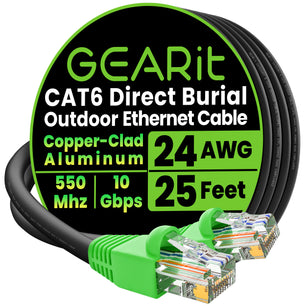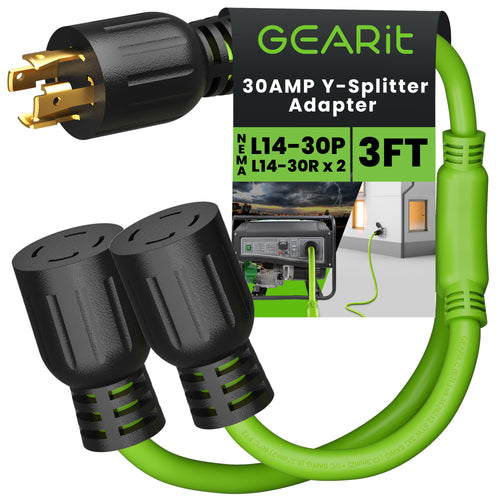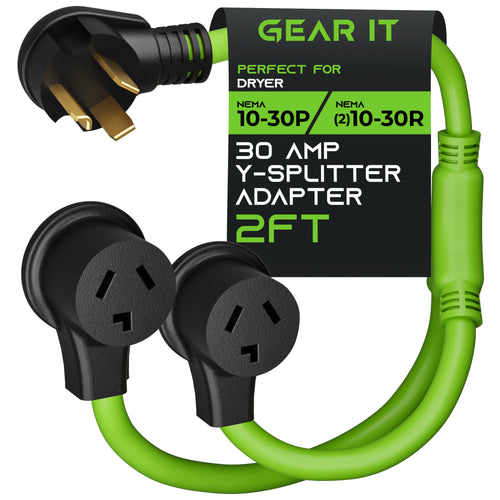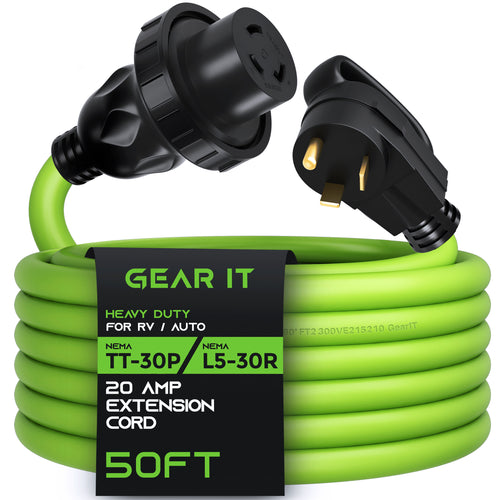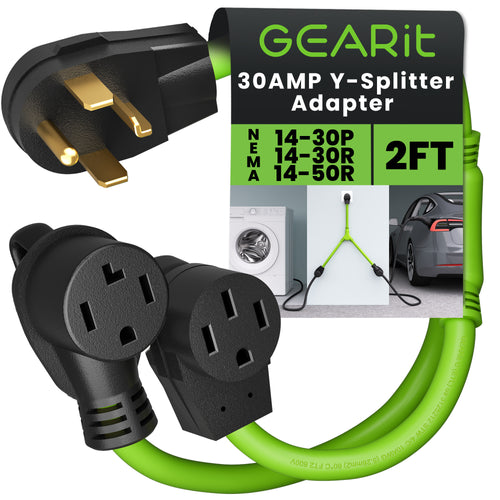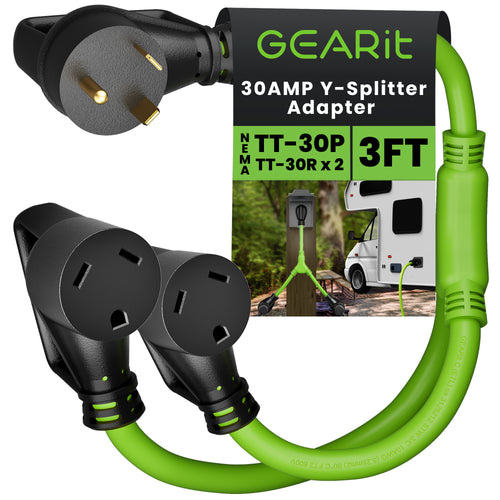A 30-amp RV plug provides power for RVs at campgrounds or with generators. It uses a 3-prong NEMA TT-30 connector, designed for 120V systems. Always ensure the correct adapters and cords for safe and efficient connections. 🛒
Power your RV reliably with GearIT’s premium 30-Amp NEMA solutions:
Shop GearIT now for safe, durable, and reliable RV power connections! ⚡🚐

If you want to power your recreational vehicle, fifth wheel, or travel trailer at home, you likely need a 30-amp RV plug for optimal performance. Using such a plug is the easy part, but installing one requires proper planning. First, you need to designate a location to safely and efficiently install the plug, taking the appropriate precautions as you do. This brief guide will have your RV plug ready for charging in no time.
What Is a 30-Amp RV Plug?
Motorhomes and other similar vehicles need a power source to function effectively. Depending on the size of your vehicle, you may need a lower- or higher-power plug and pedestal. The 30-amp system allows you to connect your vehicle to electricity to run it at its highest efficiency.
The plug on the 30-amp power cord has three prongs and can connect to a breaker installation at your home or to a generator when you travel. The average voltage is 120, and these best suit RVs with lower load needs.
How Do You Install a 30-Amp RV Plug Safely?
Like most RV owners, you may prefer to install a 30-amp plug at home. You can then connect the RV to a power source and use it while parked in the driveway or charge it up before taking it on a trip. In just four steps, you can install your plug at home with relative ease.
1. Cut Power to the Main Breaker
The most critical step in this process is to cut the power to the main breaker before you do anything else. Take a moment to consider where the electrical breakers are in your home.
What Do You Need for Installation?
Before you start the installation process, make note of the items you need to install to correctly install the plug:
- • A breaker box large enough to accommodate the 30-amp plug
- • Copper wire
- • A weatherproof outlet for wall mounting
- • A conduit for the wire
- • Wire clamps or staples to secure the wires in place
Ensure all your materials meet local coding standards. For example, your conduit for the wire should be 1 inch in diameter. You may benefit from speaking with a local fire marshal or an electrician about safety standards before you start the installation.
How Does a 30-Amp RV Plug Differ From a 50-Amp Plug?
As previously mentioned, a 30-amp plug has the voltage to power recreational vehicles with a lower load requirement. A 50-amp plug provides up to 12,000 watts of electrical power for RVs with a higher load requirement, while 30-amp plugs generally cap at 3,600 watts.
A common misconception is that using a 50-amp plug on a lower-load RV will somehow produce a stronger charge or power it more effectively. However, it will not actually make a difference. The RV will still have the wattage restrictions of vehicles its size regardless of the additional capabilities of a 50-amp plug.
A 30-amp plug and a 50-amp plug have design differences as well. This is the most telling difference between the two. The 30-amp plug is a three-prong design that includes one 120-volt hot wire, one ground wire, and one neutral wire. The 50-amp plug is a four-prong design with two 120-volt hot wires, one ground wire, and one neutral wire.
Read the instruction manual for your RV to determine the correct plug and power cord requirements for your vehicle. Keep in mind that you can technically connect to an existing outlet at your home, but it will most likely be unable to offer enough power to create a full charge.
Should You Hire a Professional To Install a 30-Amp RV Plug?
If you have experience handling small electrical repairs around the house, you could probably handle installing and operating an RV plug. However, if you are hesitant about working on anything electrical without a professional, letting an expert do the job could save a significant amount of time and prevent a dangerous mishap.
Is a 30-Amp RV Plug Worth It?
For an RV owner, having easy access to a sufficient power source is part of ensuring a good overall experience. With the correct plug, you can produce the amount of electricity that the RV manufacturer recommends to run your vehicle properly. To access everything you need to successfully use your 30-amp RV plug, check out the RV power products available from GearIT.
